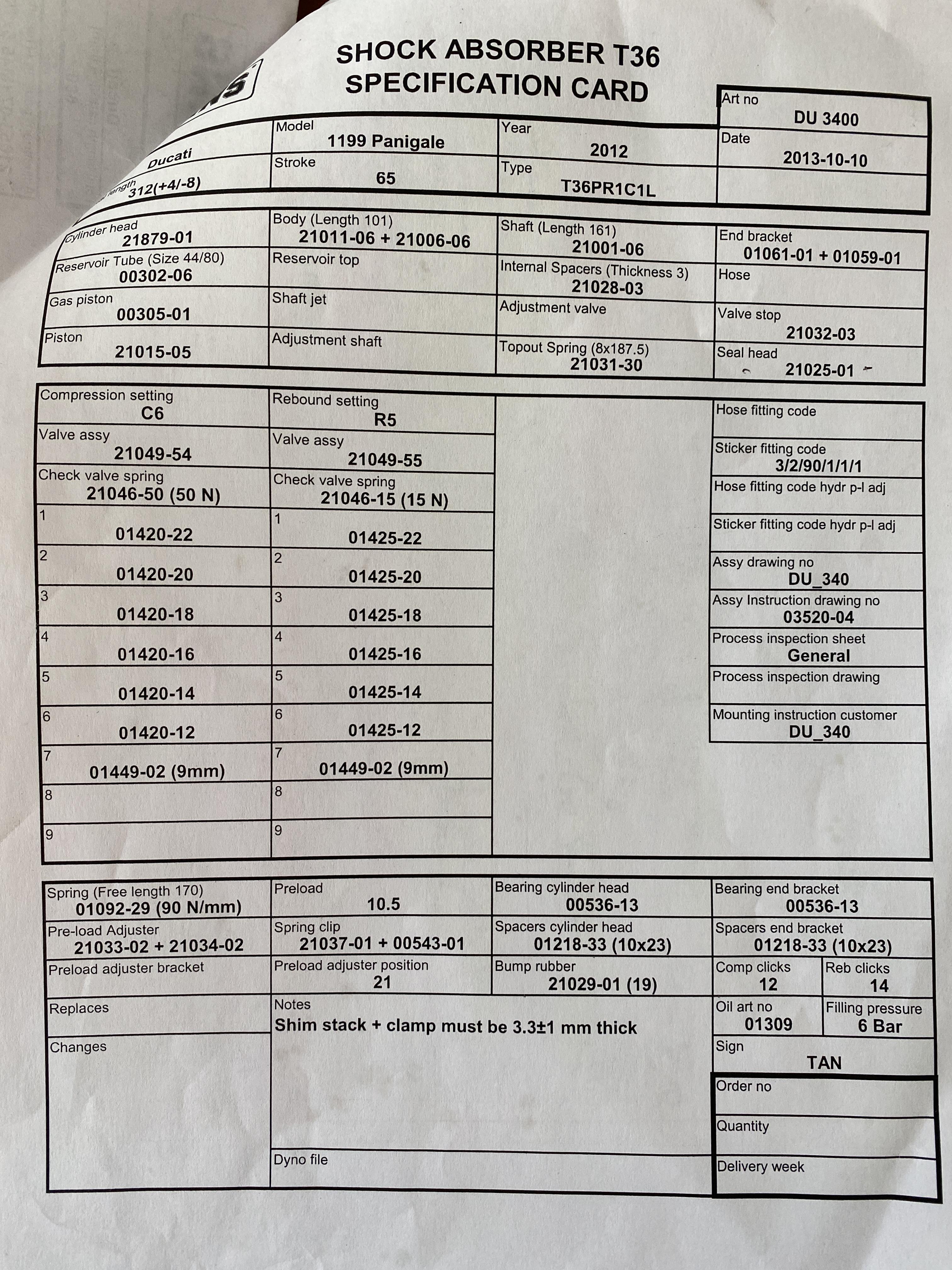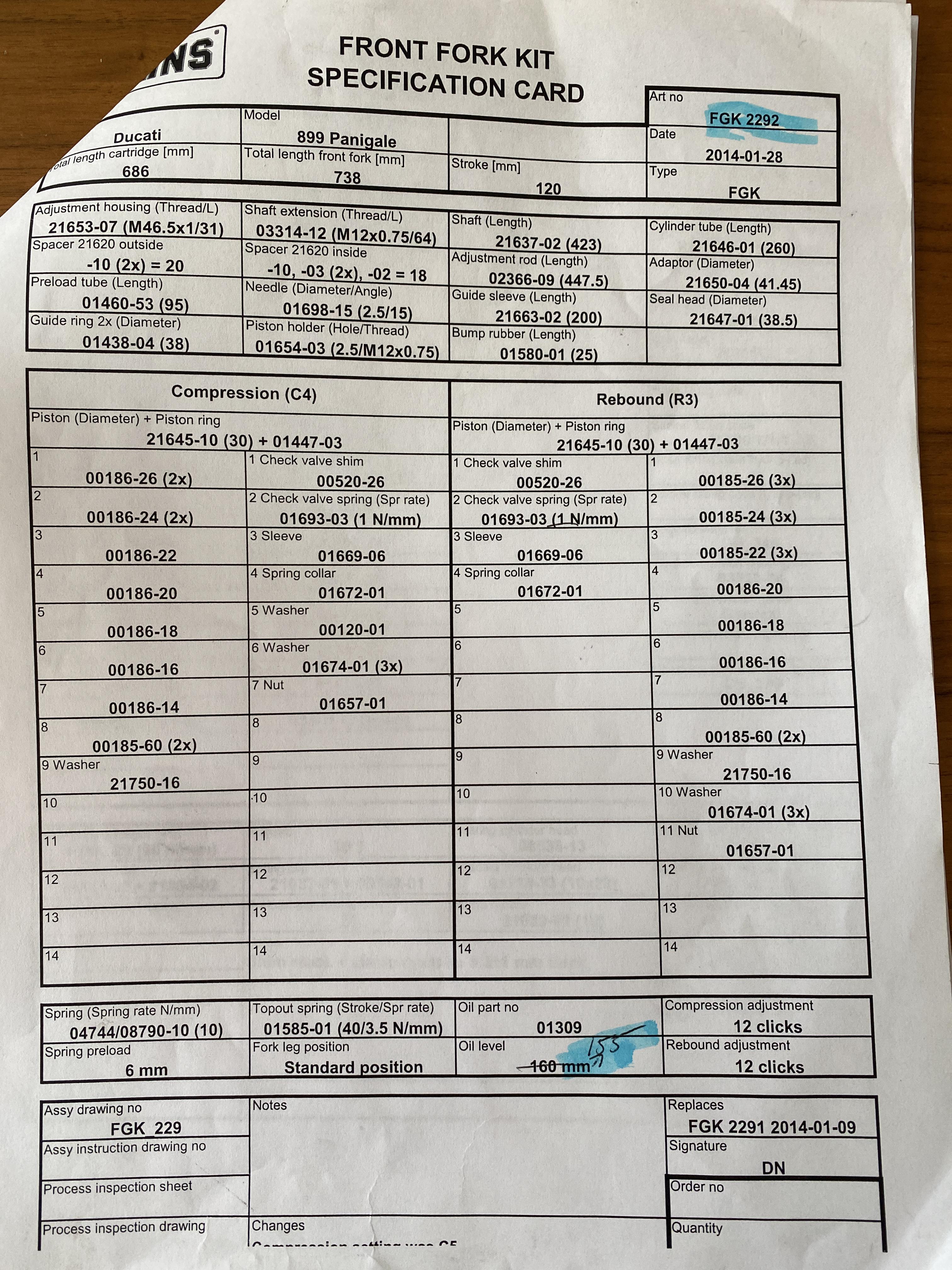@Paul G 206 lbs with gear isn't far off and workable for the street but we gotta get the sag right on both ends which is 40 mm front and 30 mm rear. The manual will usually give recommendations on street and track settings for rebound and compression, not usually bike and rider sag.
What you did was drop the front or shorten the fork, in my speak. Raising the front in my world is the handle bar is farther from the ground, the bike is being RAISED, make sense? Dropping the front makes sense in this context if you are using a tire with a smaller diameter like the 200/55 Rosso Corsa II. You don't want "rolling diameter" as you mentioned, you want the radius - meaning from the center of the axle to the ground.
The 200/55 RC II is 652 mm and the 200/60 SP V3 is 673 mm in diameter, BIG difference! Are you sure you were using a SP V3 on the 1299? The Diablo Supercorsa SP V2 in 200/55 is 656 mm as is the TD in the same size.
So take the difference in diameter and divide by 2, which gives you 11 mm, that is how much lower the rear than it was stock.
Most linkage ratios are about 2.5 mm of travel at the wheel for 1 mm of shock travel so given all that info.....you have lowered the rear of the bike going from a SP V3 to RC II tires by 11 mm and you have lowered the front not by 5 mm but rather by the hypotenuse of that measurement. We can say 4.5 mm for now. Keep in mind you have also changed the trail on the bike....more on that later.
Are you going to stick with the RC II tires? If so I would start by lengthening the shock by 3 mm. I don't recall if the Showa shock is a 1 mm pitch or more so I would recommend removing it and measuring eye-to-eye on a piece of cardboard with two pens that will fit into each eye, make a dot on the cardboard and then loose the bottom nut and turn it out 3 turns and see where you are after measuring again.
About your rebound and compression settings. Rebound is more of a science and compression more of a feel thing. I remove all rebound and compression from both the fork and shock when I start with a cold bike AFTER bike and rider sag has been set. This means all clickers are fully counter-clockwise or open.
1.) Push the front end down and release. As you release the pressure on the fork let the fork return from the initial input and observe. The fork should return past the point of your initial input and go back down a bit again and maybe one more time kindof like an inflated basketball bounces on its own.
What you want to do is control the movement so that when the fork returns it comes back to the original point, maybe slightly above that point, and then settles - not repeated bouncing. You will close or turn the rebound clicker(s) clockwise until you get the desired effect. Once you have the fork in a good place then take note of how many clicks you are away from fully clockwise, write it down, and return the fork to the number of clicks out from full clockwise.
2.) Push on the seat to set your rebound so that the rate at which the bike returns from the input matches the front. This takes time to develop the feel and be able to push on the front and rear of the bike in a consistent and even manner. Having a friend stand to the side to watch can help a lot.
You will know your rebound is too fast, meaning you do not have the valve closed enough, if the front end pops up quickly when you release the brakes or between shifts.
3.) Fork compression is set to feel and I typically start with the setting at the midway point between fully clockwise (closed) and clockwise (open). The fork should provide some resistance to bottoming to keep you off the bottom but not so stiff that your fork is staying in the middle third of the total stroke on corner entry. You will have to experiment with this and I recommend getting a 43 mm fork travel indicator from Amazon or similar. This will show you how much of the travel you are using.
4.) Once again set the rear to the front. The shock should rebound and compress at the same rate. This is what people mean when they say the bike feels balanced.


